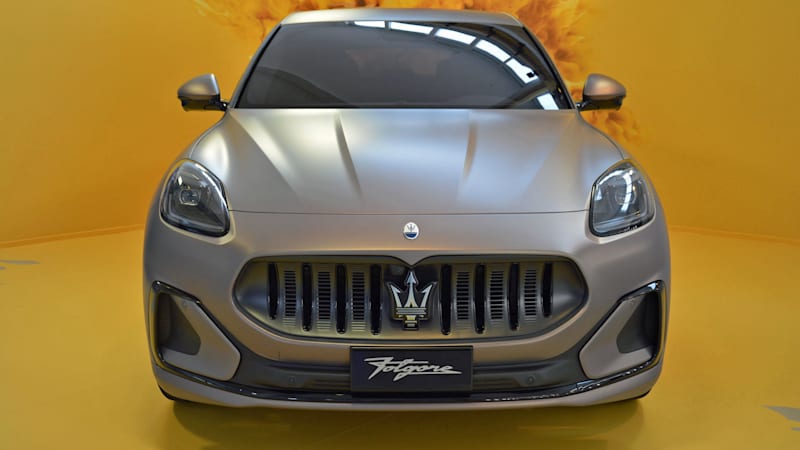Electric Maserati Grecale Folgore will have over 500 horsepower

Maserati is beginning to release details about its Folgore-badged range of EVs. We know that the battery-powered version of the next Gran Turismo will have over 1,200 horsepower, and Autoblog learned preliminary details (including output and range) about the Grecale Folgore.
Due out in 2023, the electric Grecale will share its Giorgio platform with the gasoline-powered model. Pictured in the gallery above, the architecture will incorporate a 105-kilowatt-hour lithium-ion battery pack and a pair of electric motors for through-the-road all-wheel-drive. Federico De Medio, Maserati’s head of vehicle validation, told us to expect over 500 horsepower and more than 300 miles of driving range.
“We were able to install the battery pack in the lower part of the car while keeping the Giorgio platform, which is a very versatile architecture that can be multi-energy,” he said. “I’ve heard people say, ‘It can’t underpin an EV!’ Well, you can clearly see that it can.”
Maserati will rely on lightweight materials, like aluminum and carbon fiber, to partially offset the weight of the battery pack. It will give the Grecale a 400-volt electrical system, a solution chosen for its flexibility, and the motors that will power the SUV will not be the same units fitted to the Gran Turismo. Clearly, there is no one-size-fits-all answer to electrifying a portfolio of models as diverse as Maserati’s.
But, while electric cars make headlines, gasoline-powered cars make volume, and Maserati isn’t giving up on that part of its range quite yet. It tentatively plans to offer only electric cars by 2030, but until then (and maybe even beyond then) it will let customers choose what they drive.
“We are one of the few brands still making investments in two technologies: internal combustion and electric,” said Bill Peffer, head of Maserati’s American division. “People have asked us why. The reason is simple: We’re adding products to the lineup, and the [EV] adoption curve is different in different parts of the world, so we’re going to let the customer choose. The customer is going to decide what the rate is going to be, and we have the flexibility of ramping up or ramping down depending on demand. There’s a long runway between now and 2030.”



